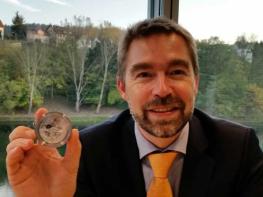For a brand that already has its own high-end in-house movement production, the move towards producing base calibres in-house is an unusual one. Although supplies risk becoming scarcer in future, alternative suppliers are gradually improving the reliability of their movement s– one of the main requirements of these so-called “tractor” calibres. Why then go through the laborious process of duplicating all this work in-house? Not just once, but twice, as IWC reveals late-stage prototypes of its new 69000 and 42000 calibres in Geneva this week.
For Stefan Ihnen, Head of Research and Development, IWC, it is simply a question of choice, even if that choice involves considerable investment and long-term development work. “In terms of the meaning of “manufacture”, the watches in which our 52 calibre movements are used are all above 10,000 Swiss francs, so this is clearly the “manufacture” segment,” he explains. “These two new movements don’t have the free hairspring or the Pellaton winding system, for example. They are very close to what you can get from ETA or Sellita but our strategy is to at least give us the choice between such external movements and an in-house option, which we did not have in the past.”

With reliability being the main concern, testing the prototypes of the new 42000 and 69000 calibres alone is not enough. The entire semi-automated assembly line for these movements has also been tested in the development laboratories and will be disassembled piece by piece before being reassembled in the workshops in Schaffhausen where the new calibres will be assembled. Around 100 prototype movements have already been produced as part of this testing procedure, with 100 more set to follow in a second phase. “Of the next series of 100 prototypes, about 20 will be tested on the wrist and the rest will go into a 500-hour test. This will simulate wearing conditions,” says Mr Ihnen.
But when the switch to production comes, the quantities involved will be thousands, not hundreds, which is why the quality and reliability has to be spot-on. “The ideal is that when we go into series production we are already reliable,” explains Stefan Ihnen, “and we won’t face any problems. We are looking at models such as the Aquatimer and the Pilot’s watches, for example, which come in quite huge volumes. So when you take this step of switching to the new movement it’s a big one and it has to be reliable.”
Another thing that will set the new calibres apart from their competitors is their finish. In keeping with the philosophy of IWC’s American founder, Florentine Ariosto Jones, who sought to industrialise watchmaking, these new calibres will have a different aesthetic from those produced in Grenchen or La Chaux-de-Fonds. “We have our own decorations and touches such as the gold oscillating mass and the blued screws, but we are coming from an industrial background,” Mr Ihnen explains. “Our founder already had this idea of industrialising watch production so it’s not a problem for us if our movements have some of this industrial character. The minute attention to detail that some brands lavish on their movements is not the main focus for us, it’s more about robustness and reliability. This is in the heritage of IWC and I think if we did more decoration and finishing it could be too much.”






